This is the weekend of the Great Backyard Bird Count (February 12th to 15th). I wanted to get away and do some serious birding away from the immediate backyard this weekend. I set out this morning to explore my usual neighbourhood haunts — Kaikondrahalli and Kasavanahalli lakes. This week turned up a lower species count than last week – the terns, in particular, were missing at both lakes. Backyard birding, it seems, turns up some pleasant surprises.

Indian Spot-billed Ducks and a single Northern Pintail drake (centre) at Kaikondrahalli Lake. Pic: Bijoy Venugopal
Kaikondrahalli lake
I was at Kaikondrahalli by 6.15 am and it was a lot less colder than last week. Winter, in fact, seems to have eloped with some of the migrants. But some have stayed behind. I saw Northern Shovelers at Kaikondrahalli after a gap of nearly a year (though other birders have recorded it during that period). The two Northern Pintail drakes I wrote about last week, were there, too. An Indian Spotted Eagle, which I couldn’t see very clearly last week, gave me a good look. A huge flock of Rosy Starlings, numbering a hundred and fifty at least, passed overhead. The Stilts were in full attendance, as were the Black-headed Ibis.
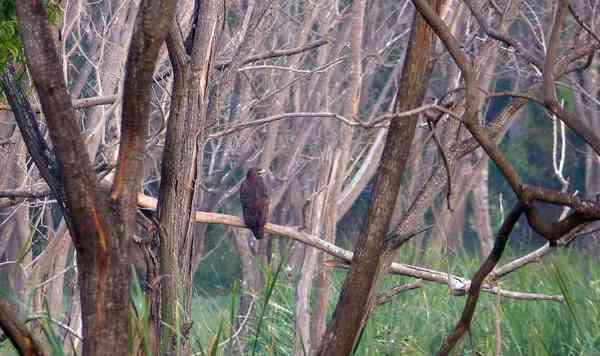
Looks very much like an Indian Spotted Eagle. ID confirmation welcome. Pic: Bijoy Venugopal
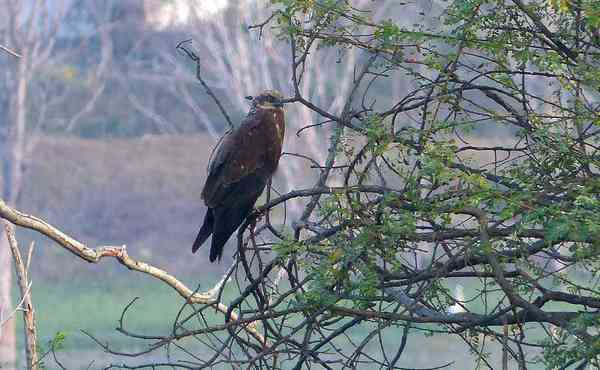
A Western Marsh Harrier waits until the table is set for breakfast. Pic: Bijoy Venugopal
Being earlier in the morning than last week, I saw many more Black-crowned Night Herons, including a juvenile. The solitary Spot-billed Pelican was there, too. No Asian Openbill Storks were seen today. There were many more sandpipers in the shallow, putrid marshes adjoining the lake. This habitat, which once supported much more diversity, has been cornered by greedy developers, with the government no doubt in cahoots. The marshes are being filled up with mounds of soil, and it’s a matter of time before this entire habitat will be eclipsed by suburbia.
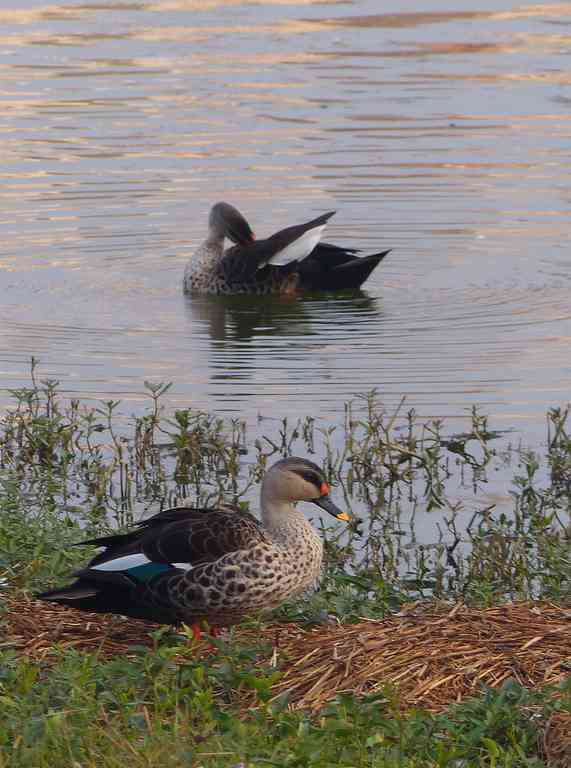
Indian Spot-billed Ducks grooming themselves for the weekend. Pic: Bijoy Venugopal

A Purple Heron tries to make itself scarce. Pic: Bijoy Venugopal
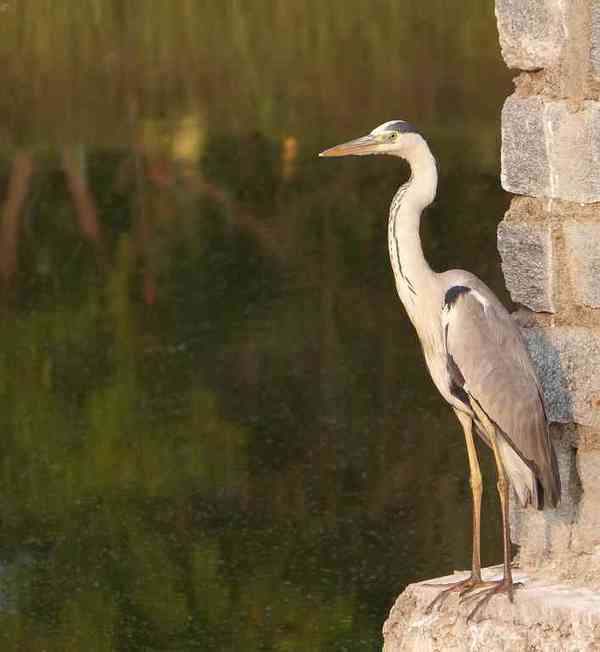
A Grey Heron usurps a favourite vantage of smaller birds. Pic: Bijoy Venugopal
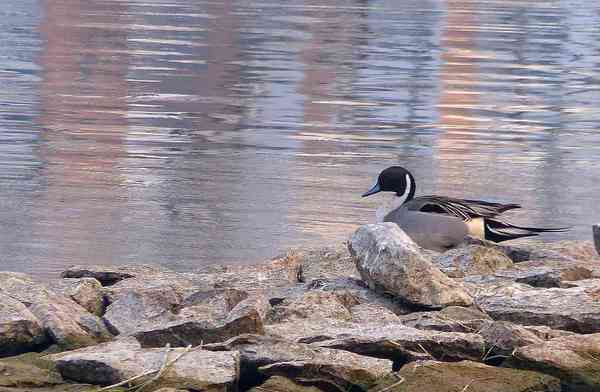
Backyard birding is really profitable when it turns up birds like this Northern Pintail drake. Pic: Bijoy Venugopal
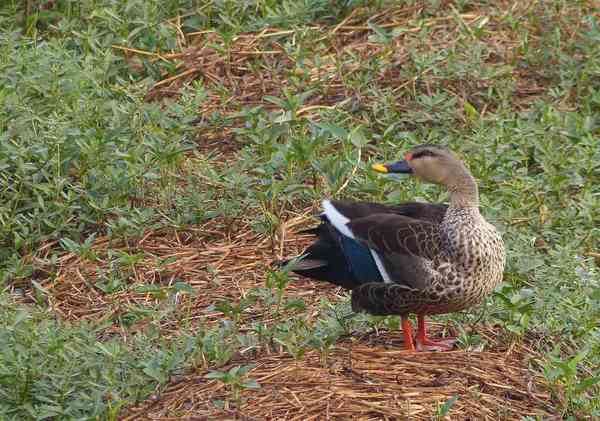
This Spot-billed Duck had no plans to enter the water. Pic: Bijoy Venugopal
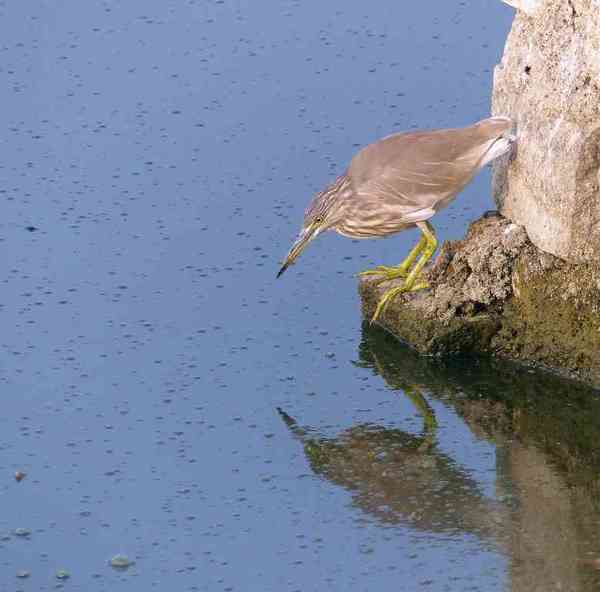
An Indian Pond-Heron looks for a snack. Pic: Bijoy Venugopal
Black-winged Stilts prefer this shallow murky water and they were joined today by a number of Wood Sandpipers, a few Common Sandpipers and Marsh Sandpipers. At one point, they were scattered by an ambitious Brahminy Kite and the Stilts took wing, flying in a noisy skein inches above the surface of the lake, their bright red shanks trailing. Clamorous Reed-Warblers were seen in addition to Blyth’s Reed Warblers. A huge flock of Little Swifts was seen hawking winged insects at dawn. A total of 48 species from this morning’s walk (see eBird checklist). The species count is lower than last week, but I’m quite chuffed about the Indian Spotted Eagle and the Northern Shovelers.
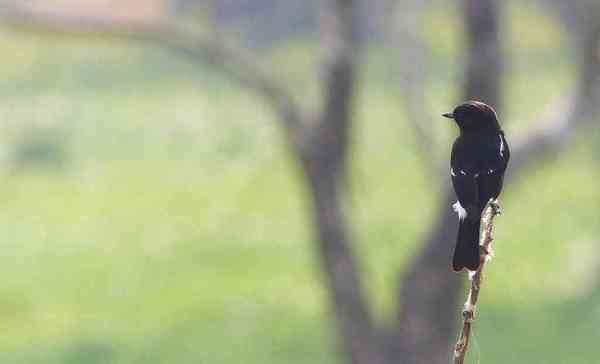
A male Pied Bushchat claims his throne. Pic: Bijoy Venugopal
Kasavanahalli lake
I had been to Kasavanahalli for the first time one evening a couple of weekends ago. The bird diversity was not as high as at Kaikondrahalli, but there were potential habitats for interesting sightings. The walk is a circuit of about two kilometres, skirting the lake and passing through sections that are lightly wooded with shaded copses of eucalyptus and acacia on one side, and Indian date palms, Ficus and other small trees on another side. These patches are the haunts of Rose-ringed Parakeets and Indian Golden Orioles. A Common Iora was also recorded. The Ficus trees were in heavy fruit when I last visited, but now its boughs seem quite sparse. Here, too, construction projects have squeezed the lake’s boundaries. A large wetland adjoining the lake proper, no doubt linking it to Kaikondrahalli, is being filled up in preparation for a construction project.

Serenading his lady love? Or singing about lost wetlands?. Pic: Bijoy Venugopal
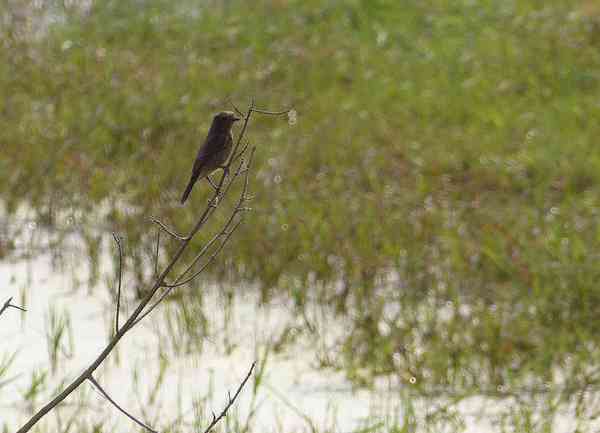
All the while, Lady Bushchat seems least perturbed. Pic: Bijoy Venugopal
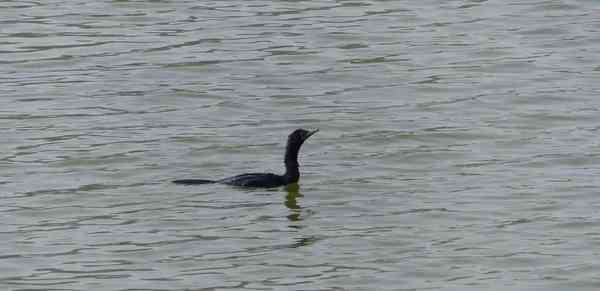
A Little Cormorant doing what it does best. Pic: Bijoy Venugopal
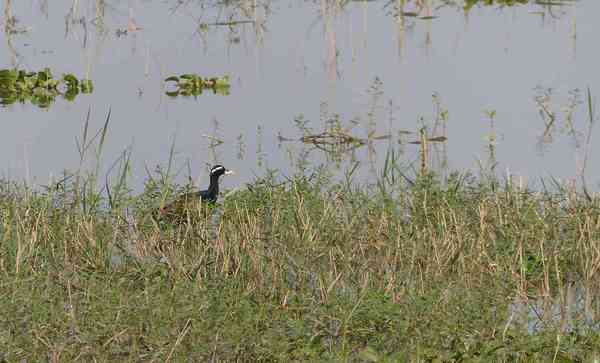
A Bronze-winged Jacana is always a welcome sight. Pic: Bijoy Venugopal
When I got there, it was nearly half past eight and quite warm. Not the best time for birding but it was nevertheless quite rewarding. I checked 46 species (see the eBird checklist) during my sojourn of an hour and forty minutes. No big-ticket sightings really, but for a Zitting Cisticola (which I last remember checking during an outing at Bellandur lake in 2014). As the morning warmed, the action got a little better. A Bronze-winged Jacana was spotted. A Western Marsh Harrier swooped down, scattering the Grey-headed Swamphens and Black-headed Ibis that were feeding peacefully. A pair of Red-wattled Lapwings, perched on a mound in the reclaimed wetland, screamed blue murder.
The adorable little Pale-billed Flowerpeckers were chasing each other with noisy clicking calls and occasional trilling. A handsome Pied Bushchat was getting in the Valentine’s Day spirit as he serenaded his drab little darling from his perch.
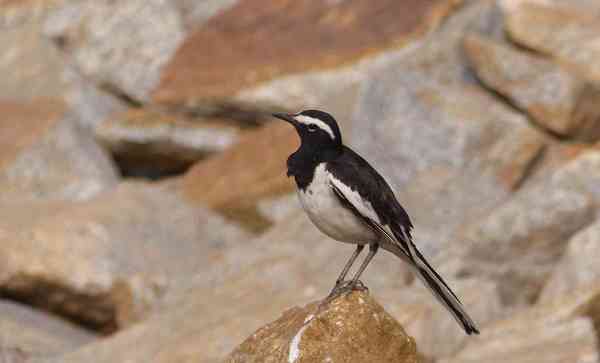
A White-browed Wagtail is a really striking bird. Pic: Bijoy Venugopal
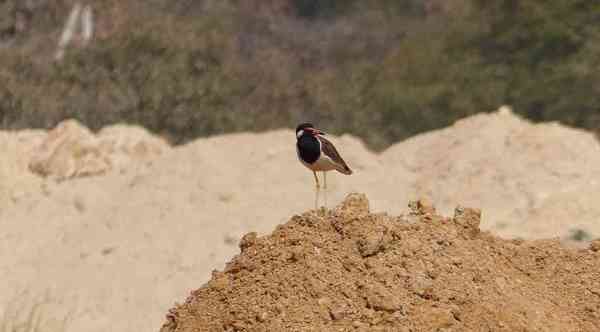
A Red-wattled Lapwing laments the loss of its wetland. Pic: Bijoy Venugopal
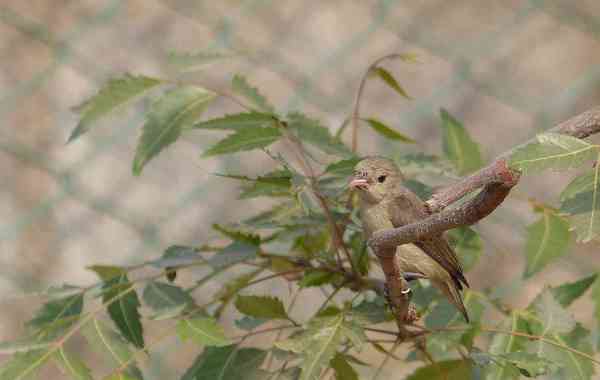
A restless Pale-billed Flowerpecker strikes a pose long enough to be shot. Pic: Bijoy Venugopal
It turned out to be a satisfying morning of backyard birding. I’m going to try if I can do some more tomorrow.
Related Articles
Whitefield’s lakes are a haven for bird watchers
Great Backyard Bird Count, it’s a wrap!
Guess one cannot get a better lake than Kaikondrahalli Lake, a lake with woods and marshland, perfect habitat for variety of birds, also this is probably one of the best maintained lakes i have seen in Bangalore. Thanks for sharing the article. Sriram